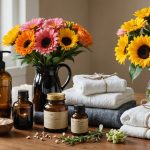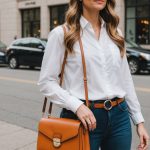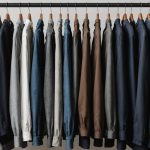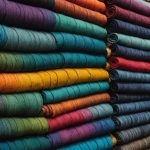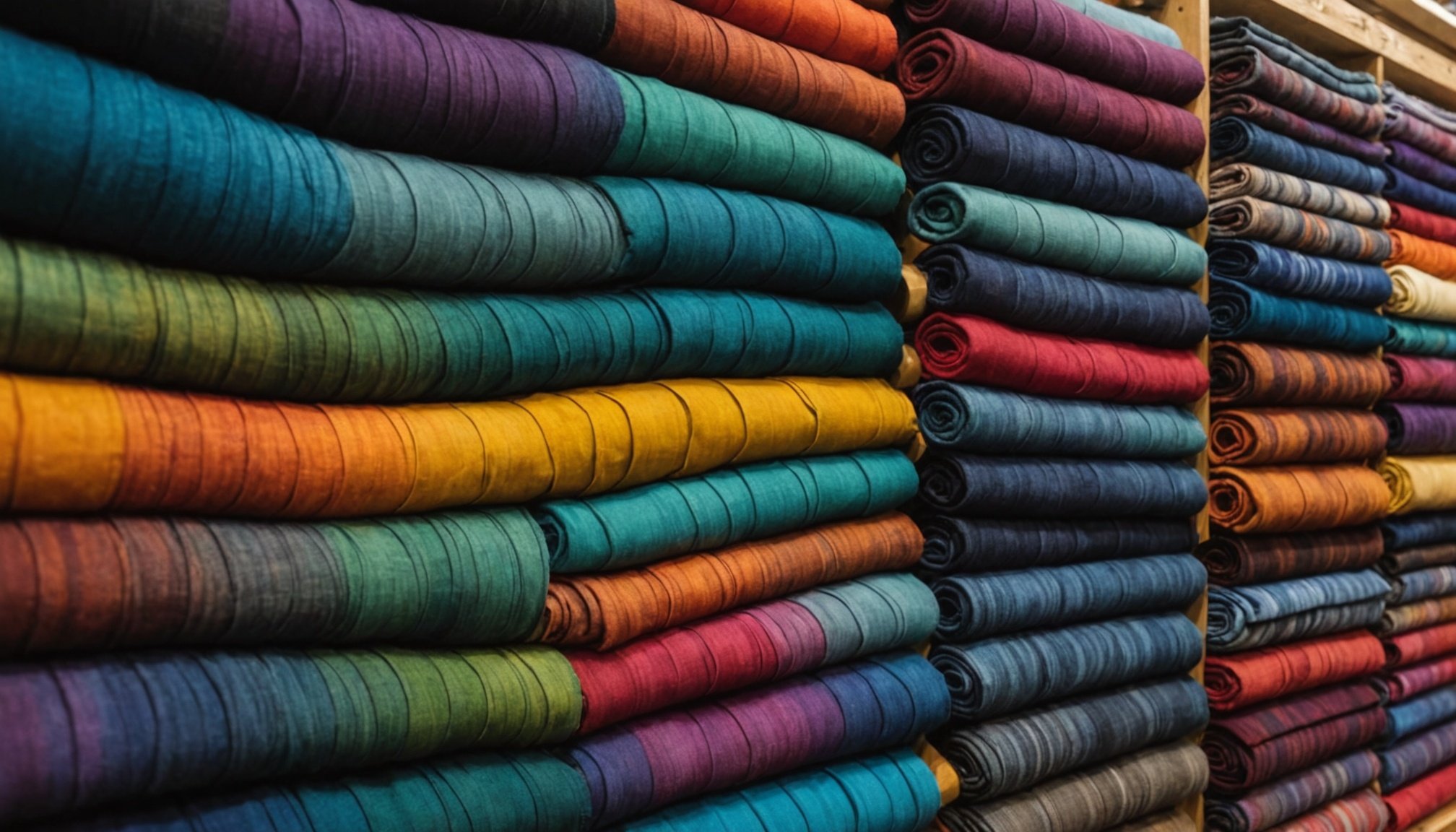Introduction to London’s Hand-Dyed Fabric Scene
London’s hand-dyed fabrics market is an intricate tapestry woven from the skills and creativity of local fabric artisans. These London textile shops offer a dynamic range of colors and patterns, fostering a deep appreciation for the craft. The city’s commitment to supporting local artisans is integral to preserving traditional techniques and fostering innovation within the industry.
The history of fabric dyeing in London is rich, dating back centuries. This craft has evolved, incorporating both historical methods and modern influences. In the heart of London, textile shops have become sanctuaries for both seasoned fabric enthusiasts and newcomers eager to discover the beauty of hand-dyed textiles.
Topic to read : Discover the best uk boutiques for handcrafted women”s leather belts
Supporting local shops and artisans not only aids in sustaining the economic landscape but also nurtures a cultural heritage passed down through generations. Each piece tells a story, crafted with care and skill, reflecting the city’s unique blend of tradition and modernity.
With a variety of techniques used by artisans, from natural dyes to contemporary synthetic methods, London remains a vital hub for fabric enthusiasts. Discovering these textiles is a journey, rich with the history and craftsmanship that define the city’s hand-dyed fabric scene.
Also to see : How can you accessorize a simple outfit to make it stand out?
Hidden Gems: Unique Shops for Hand-Dyed Fabrics in London
London is home to several hidden gems that offer unique hand-dyed fabrics, providing fabric enthusiasts with specialty textiles and distinctive shopping experiences.
Shop 1: [Name of Shop]
This shop is renowned for its rare hand-dyed textiles, merging traditional dyeing techniques with modern aesthetics. It specialises in vibrant batik patterns and minimalist shibori designs, appealing to various tastes. Located in a quaint corner of London, the shop operates from 10 AM to 6 PM, Monday to Saturday, offering exclusive discounts for first-time buyers.
Shop 2: [Name of Shop]
This shop is celebrated for its innovative approach to hand-dyed fabrics, featuring pioneering dye methods that set it apart in London. With its collection of signature gradient-dyed linens, the shop attracts both casual and experienced fabric lovers. Situated near a bustling marketplace, visitors are advised to enjoy a leisurely stroll through the area after visiting.
Shop 3: [Name of Shop]
This shop captivates visitors with its rustic charm and comprehensive selection of hand-dyed fabrics. Known for its breathable, silk fabrics dyed with all-natural ingredients, it offers a tactile shopping experience. Visitors should note that the shop is closed on Sundays and plan accordingly to explore this textile haven.
Meet the Artisans: Interviews with Fabric Creators
In London, fabric artisans are the heart and soul of the hand-dyed fabric scene. Through exclusive artisan interviews, we gain unique insights into the personal stories and creative processes that make their work exceptional. Listening to these creators reveal the intricate details of their dyeing techniques, one can truly appreciate the blend of tradition and innovation present in their craft.
Traditional methods hold immense importance in contemporary practices, serving as both an inspiration and a foundation. Artisans often blend historical techniques with modern aesthetics to create stunning specialty textiles. By adhering to time-honoured methods, these artisans preserve cultural heritage while also adding a contemporary twist, ensuring their products are both authentic and stylish.
The passion these artisans have for their craft is palpable, reflected in the unique textiles produced. Their stories offer a glimpse into the patience and dedication required for this intricate work. Recognising and supporting these artists helps sustain the vibrant tapestry of London’s fabric market, enabling them to continue creating and innovating. These artisan interviews are not just about textiles; they are windows into the soul of a thriving community.
Fabric Types and Dyeing Techniques Explained
In the world of hand-dyed fabrics, understanding different fabric types and dyeing techniques is crucial for both enthusiasts and newcomers. Each fabric type offers unique characteristics, affecting how it absorbs dye and its overall texture. Commonly used materials include cotton, linen, and silk. Cotton, due to its absorbent nature, is perfect for achieving vibrant colours, whereas linen offers a crisp texture that takes on subtle hues. Silk, celebrated for its smoothness, results in a luxurious finish that enhances any dye.
Popular Dyeing Techniques
Dyeing methods vary, ranging from natural to synthetic. Natural dyeing employs plant-based substances, ensuring eco-friendly practices, while synthetic dyes offer a wider range of vivid colours. Techniques like tie-dye, known for its playful patterns, shibori, a Japanese method involving intricate folding and binding, and batik, which utilises wax for resist dyeing, are all trending.
Sustainability in Fabric Dyeing
Eco-friendliness is increasingly important. Many shops now focus on sustainable practices, using organic materials and eco-conscious methods. These efforts not only reduce environmental impact but also attract consumers who prioritize sustainability, ensuring the longevity of London’s vibrant textile scene.
Practical Tips for Shopping for Hand-Dyed Fabrics
Shopping for hand-dyed fabrics in London is an exciting experience filled with vibrant colours and textures. However, to make the most of your visit, it’s essential to consider several factors. The city’s bustling London textile shops are best explored during weekdays to avoid crowds, allowing for a more personal shopping experience.
When it comes to fabric care, hand-dyed textiles require specific maintenance to preserve their unique qualities. It’s advisable to wash these fabrics in cold water with mild detergent to prevent colour bleeding. Air drying instead of tumble drying will maintain the fabric’s integrity.
Choosing the right fabric for your project can be daunting. It’s crucial to consider the fabric type and its intended use. For example, opt for cotton when vibrant patterns are desired, and silk for a luxurious touch in fashion projects.
When selecting textiles, engage with shop staff who often provide valuable customer guidance and insights into the dyeing techniques employed. This not only enhances your understanding but ensures you select fabrics that truly meet your creative needs. With these tips, your fabric shopping journey in London will be both rewarding and inspiring.
Visual Inspiration: Images of Unique Hand-Dyed Fabrics
Perusing hand-dyed fabrics can unearth a treasure trove of aesthetics, showcasing creativity and skill. Captivating textile photography vividly captures the distinct textures and vibrant hues, presenting a visual feast for enthusiasts and designers alike. Through images, one can appreciate the meticulous detailing and craftsmanship involved in creating each piece.
Showcase of Featured Fabrics
Each photograph within this gallery highlights different characteristics of hand-dyed textiles. Detailed shots emphasize nuances in patterns and saturation, bringing various dyeing and folding techniques to life. From bold shibori patterns to subtle gradients achieved through natural dyes, these images serve as a window into artisanal skill.
Designs and Projects Using Hand-Dyed Fabrics
Hand-crafted projects utilizing these fabrics are featured to inspire creativity. Fashion pieces, home décor, and art projects are enhanced by the unique qualities of hand-dyed textiles. Visuals of tailored garments or bespoke cushions illustrate practical possibilities, triggering ideas for personal designs.
Community Engagement: Events and Workshops
London’s vibrant scene offers manifold events and workshops for those keen on engaging more deeply with hand-dyed fabrics. Attendees can explore the community through fabric shows or fairs, gaining valuable insights and learning new skills from master artisans. Engaging in these sessions fosters creativity and growth in textile appreciation.


